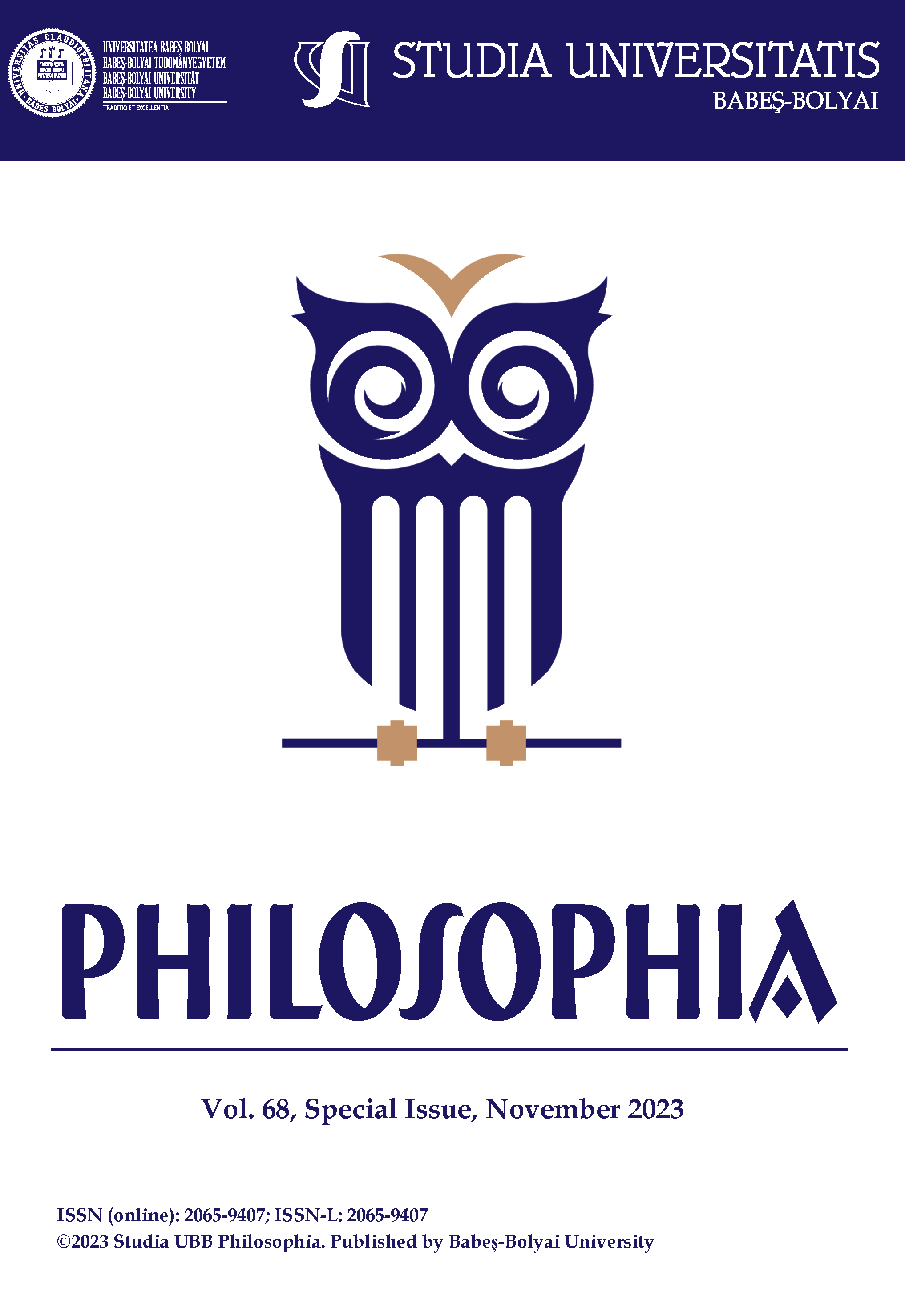The Artwork as a Force Field: Theodor W. Adorno’s Aesthetic Configuration of Antagonisms
DOI:
https://doi.org/10.24193/subbphil.2023.sp.iss.05Keywords:
Adorno – force field – antagonismsAbstract
In this paper, my purpose is to take into serious consideration Adorno’s explicit conception of the artwork as a force field. With this expression he intends to emphasize the inner constitution of the artwork as a movement of antagonistic tensions, a dynamic of elements that are not simply juxtaposed, but dialectically interacting with one another. In a similar configuration, the aesthetic experience of the artwork consists in letting their friction explode to its extreme, achieving a balance which remains nevertheless substantially precarious and inconclusive, ready to be immediately set in motion again. Thanks to the aesthetic trait of the force field, these tensions are brought to unity in a way that it does not suppress the enactment of antagonisms, but keeps their multiplicity alive: Homer’s tale of Penelope as an allegory of art.References
Adorno, Theodor W., Aesthetic theory, translated, edited by Robert Hullot-Kentor, Continuum, London/New York, 2002.
Adorno, Theodor W., Negative Dialectics, translated by E. B. Ashton, Routledge, London/ New York, 2004.
Adorno, Theodor W., Prisms, English translation by S. Weber Nicholsen and S. Weber, MIT Press, Cambridge, 1997.
Benjamin, Walter, Philosophy, History, Aesthetics, ed. Gary Smith, The University Chicago Press, Chicago, 1989.
Berleant, Arnold, “Objects into Persons: The Way to Social Aesthetics”, in Espes, 6.2 (2017), pp. 9-18.
Berleant, Arnold, The Aesthetic Field. A Phenomenology of Aesthetic Experience, Cybereditions, 2000.
Berleant, Arnold, “The music in my philosophy”, in ASA Newsletter, 2012, 32.3.
Bronner, Stephen Eric, Of Critical Theory and its Theorists, Blackwell, Oxford, 1994.
Daniels, Jordan, Figurations of Nature in Kant and Adorno, doctoral dissertation, Faculty of the James T. Laney School of Graduate Studies of Emory University, 2021.
Eusterschulte, Anne, Tränkle, Sebastian (ed. by), Theodor. W. Adorno: Ästhetische Theorie, De Gruyter, Berlin/Boston, 2021.
Foster, Roger, Adorno. The Recovery of Experience, State University of New York Press, Albany, 2007.
Gordon, Peter E., Hammer, Espen, Pensky, Max (ed. by), A Companion to Adorno, Wiley Blackwell, Hoboken, 2020.
Horkheimer, Max, Adorno, Theodor W., Dialectic of enlightenment: Philosophical Fragments, Stanford, Stanford University Press, 2002.
Hunh, Tom (ed. by), The Cambridge Companion to Adorno, Cambridge University Press, Cambridge, 2004.
Jay, Martin, Adorno, Harvard University Press, Cambridge (MA), 1984.
Jay, Martin, Force fields: between intellectual history and cultural critique, Routledge, London/New York, 2013.
Lenk, Kurt, „Zur methodik der Kunstsoziologie“, in P. Bürger (ed. by), Seminar: Literatur‐ und Kunstsoziologie, Suhrkamp, Frankfurt a. M., 1978, pp. 55-71.
Maharaj, Ayon, The dialectics of aesthetic agency: revaluating German aesthetics from Kant to Adorno, Bloomsbury, London, 2013.
Matteucci, Giovanni, “The aesthetic field: Arnold Berleant’s philosophy as a new understanding of experience”, in Popular Inquiry, 1/2022, pp. 112-25.
Nicholsen, Shierry Weber, “Toward a More Adequate Reception of Adorno’s "Aesthetic Theory": Configurational Form in Adorno’s Aesthetic Writings”, in Cultural Critique, 1991, No. 18, pp. 33- 64.
Downloads
Published
How to Cite
Issue
Section
License
Copyright (c) 2023 Studia Universitatis Babeș-Bolyai Philosophia

This work is licensed under a Creative Commons Attribution-NonCommercial-NoDerivatives 4.0 International License.





